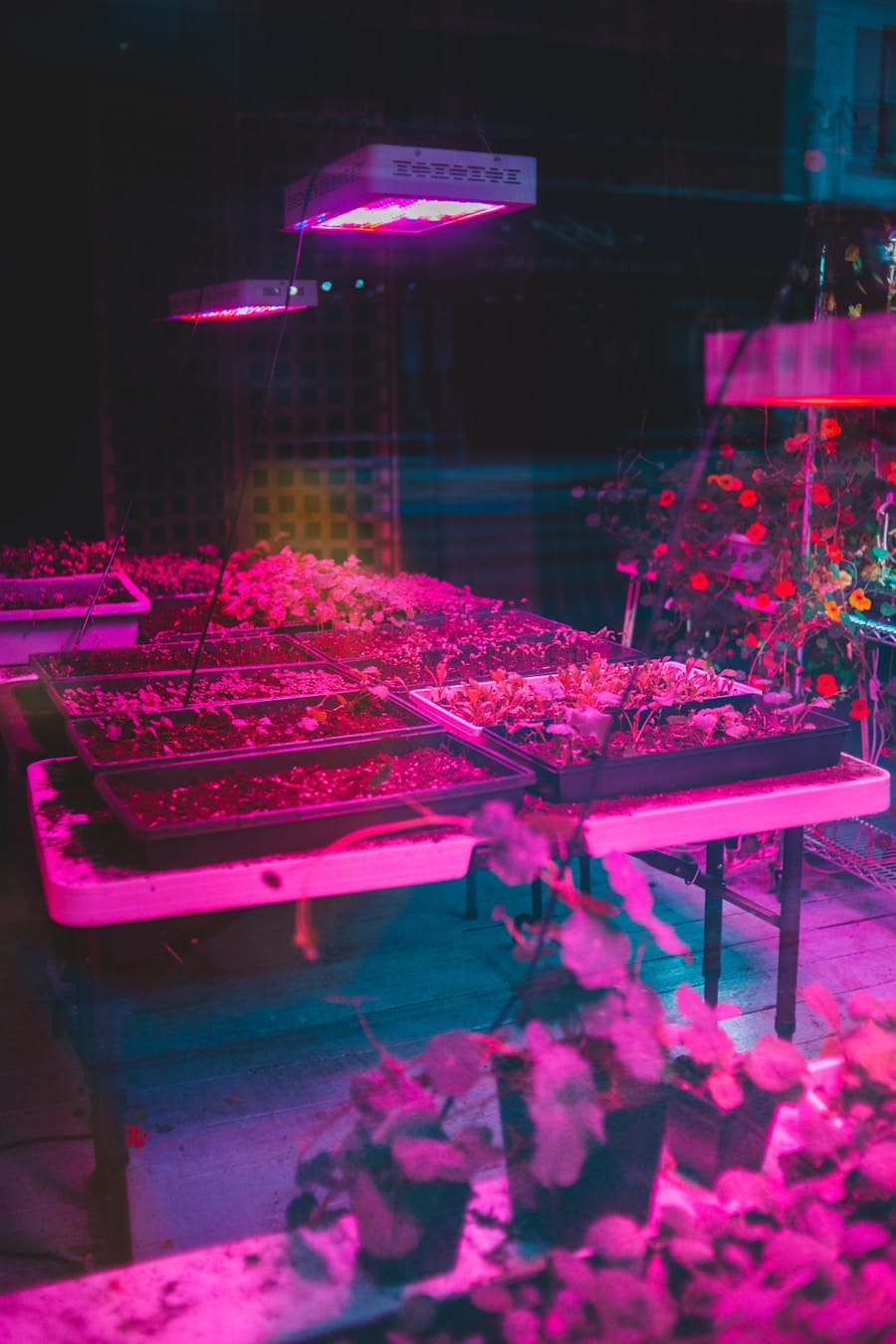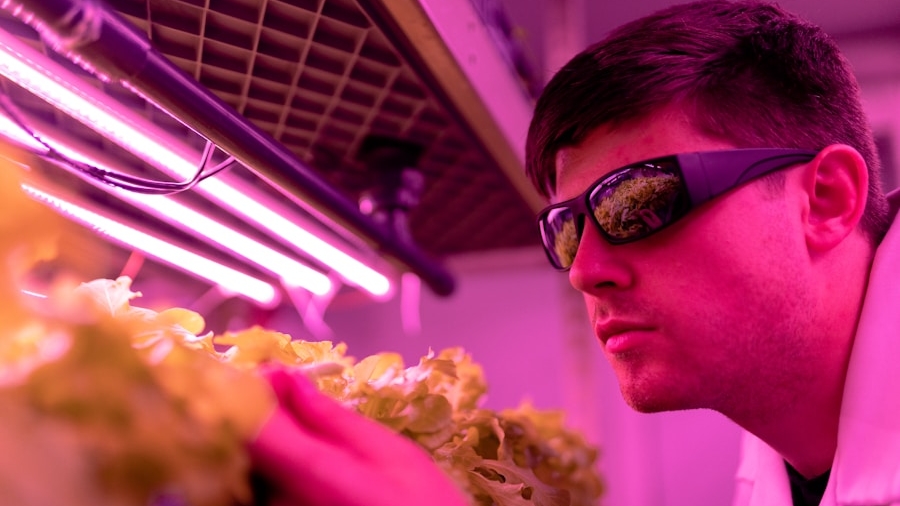The convergence of artificial intelligence (AI) and vertical farming represents a transformative shift in the way we approach food production, particularly in urban environments. Vertical farming, which involves growing crops in stacked layers or vertically inclined surfaces, has gained traction as a solution to the challenges posed by traditional agriculture, such as land scarcity, climate change, and the increasing demand for fresh produce. By integrating AI technologies into these systems, farmers can optimize growth conditions, enhance resource efficiency, and ultimately increase yields.
This innovative approach not only addresses food security concerns but also aligns with the growing trend of urbanization, where more than half of the world’s population now resides in cities. AI-enabled vertical farming leverages advanced algorithms, machine learning, and data analytics to monitor and manage various aspects of crop production. Sensors collect real-time data on environmental conditions such as temperature, humidity, light levels, and nutrient concentrations.
This data is then analyzed to make informed decisions about irrigation, fertilization, and pest control. The result is a highly efficient farming system that can produce high-quality crops year-round, regardless of external weather conditions. As urban areas continue to expand and the pressure on food systems intensifies, AI-enabled vertical farming emerges as a promising solution to meet the nutritional needs of city dwellers while minimizing the ecological footprint of agriculture.
Key Takeaways
- AI-enabled vertical farming combines artificial intelligence and vertical farming to revolutionize urban food production.
- Advantages include increased efficiency, higher yields, reduced water usage, and year-round production.
- Challenges include high initial investment, technical complexity, and potential job displacement.
- Integration of AI and automation improves monitoring, decision-making, and resource optimization in vertical farming.
- AI-enabled vertical farming has the potential to reduce environmental impact, increase sustainability, and improve food security in urban areas.
Advantages of AI-Enabled Vertical Farming for Urban Food Production
One of the most significant advantages of AI-enabled vertical farming is its ability to maximize space utilization in densely populated urban areas. Traditional agriculture requires vast tracts of land, which is often unavailable in cities. Vertical farms can be established in repurposed buildings, warehouses, or even shipping containers, allowing for food production to occur closer to consumers.
This proximity not only reduces transportation costs and emissions but also ensures that fresh produce reaches urban residents more quickly. The integration of AI further enhances this advantage by enabling precise control over growing conditions, leading to faster growth cycles and higher yields. Moreover, AI technologies facilitate resource optimization in vertical farming systems.
Water usage is a critical concern in agriculture, and vertical farms can employ hydroponic or aeroponic systems that use significantly less water than traditional soil-based farming. AI algorithms can analyze moisture levels and plant needs to deliver the exact amount of water required at any given time, minimizing waste. Additionally, energy consumption can be optimized through smart lighting systems that adjust based on plant growth stages and environmental conditions.
By reducing resource inputs while maximizing outputs, AI-enabled vertical farming presents a sustainable model for urban food production that can help alleviate the pressures of climate change and resource scarcity.
Challenges and Limitations of AI-Enabled Vertical Farming

Despite its numerous advantages, AI-enabled vertical farming faces several challenges and limitations that must be addressed for widespread adoption.
The technology involved—ranging from advanced sensors and automation equipment to climate control systems—can be prohibitively expensive for many potential operators.
This financial barrier may deter small-scale farmers or entrepreneurs from entering the market, leading to a concentration of vertical farming operations among larger corporations with greater resources. Additionally, there are technical challenges associated with integrating AI into vertical farming systems. The reliance on data-driven decision-making necessitates robust data collection and analysis capabilities.
Inconsistent data quality or insufficient sensor coverage can lead to suboptimal growing conditions and reduced crop yields. Furthermore, the rapid pace of technological advancement means that operators must continually invest in updates and training to keep up with the latest developments in AI and automation. This ongoing need for adaptation can be daunting for those new to the field or lacking technical expertise.
Integration of AI and Automation in Vertical Farming Systems
The integration of AI and automation into vertical farming systems is a complex process that involves multiple components working in harmony. At the core of this integration are sophisticated sensors that monitor environmental parameters such as light intensity, temperature, humidity, and nutrient levels. These sensors provide real-time data that feeds into AI algorithms capable of analyzing trends and making predictions about plant growth.
For instance, machine learning models can identify optimal conditions for specific crops based on historical data, allowing farmers to tailor their approaches accordingly. Automation plays a crucial role in executing the decisions made by AI systems. Robotic systems can handle tasks such as planting seeds, harvesting crops, and managing nutrient delivery with precision and efficiency.
For example, automated harvesting robots equipped with computer vision can identify ripe fruits or vegetables and pick them without damaging surrounding plants. This level of automation not only reduces labor costs but also minimizes human error, ensuring that crops are handled delicately and efficiently. As these technologies continue to evolve, the potential for fully autonomous vertical farms becomes increasingly feasible.
Environmental Impact and Sustainability of AI-Enabled Vertical Farming
The environmental impact of AI-enabled vertical farming is a critical consideration in discussions about sustainable agriculture. One of the most compelling benefits is the significant reduction in land use compared to traditional farming methods. By utilizing vertical space and advanced growing techniques like hydroponics or aeroponics, these farms can produce substantial quantities of food without requiring vast expanses of arable land.
This is particularly important as urban populations grow and agricultural land becomes increasingly scarce due to urban sprawl. Moreover, AI-enabled vertical farms have the potential to minimize water usage dramatically. Traditional agriculture accounts for approximately 70% of global freshwater consumption; however, vertical farms can reduce this figure by up to 90% through closed-loop water systems that recycle water efficiently.
Additionally, because these farms operate indoors under controlled conditions, they are less susceptible to pests and diseases, reducing the need for chemical pesticides and fertilizers that can harm ecosystems. The ability to produce food locally also decreases transportation emissions associated with long-distance food supply chains, further enhancing the sustainability profile of urban agriculture.
Economic and Social Implications of AI-Enabled Vertical Farming

The economic implications of AI-enabled vertical farming are multifaceted and can have far-reaching effects on local economies. By establishing food production facilities within urban areas, these farms create job opportunities in various sectors including technology development, farm management, logistics, and distribution. As demand for locally sourced produce increases, vertical farms can stimulate local economies by providing fresh food options while supporting community resilience against global supply chain disruptions.
Socially, AI-enabled vertical farming has the potential to enhance food security in urban environments where access to fresh produce may be limited. Food deserts—areas with limited access to affordable and nutritious food—are prevalent in many cities around the world. Vertical farms can address this issue by providing fresh fruits and vegetables directly within these communities.
Furthermore, educational initiatives surrounding vertical farming technology can empower local residents with knowledge about sustainable practices and healthy eating habits. By fostering a culture of innovation and sustainability within urban settings, AI-enabled vertical farming can contribute positively to community well-being.
Future Developments and Innovations in AI-Enabled Vertical Farming
As technology continues to advance at an unprecedented pace, the future of AI-enabled vertical farming holds exciting possibilities for innovation and development. One area poised for growth is the integration of advanced robotics into these systems. Future vertical farms may employ drones for monitoring crop health from above or autonomous vehicles for transporting goods within large facilities.
These innovations could streamline operations further while enhancing productivity. Additionally, advancements in genetic engineering may lead to the development of crop varieties specifically suited for vertical farming environments. By creating plants that thrive under artificial lighting or require fewer resources, researchers could significantly increase yields while reducing environmental impacts.
The combination of these innovations with AI-driven analytics will likely result in even more efficient farming practices that push the boundaries of what is currently possible in urban agriculture.
The Potential of AI-Enabled Vertical Farming for Urban Food Production
The potential of AI-enabled vertical farming as a solution for urban food production is immense. By harnessing cutting-edge technologies to optimize growing conditions and resource use, these systems offer a sustainable alternative to traditional agriculture that aligns with the needs of rapidly urbanizing populations. While challenges remain regarding initial investments and technical integration, ongoing advancements in AI and automation promise to address these issues over time.
As cities continue to grapple with food security concerns amid climate change and population growth, AI-enabled vertical farming stands out as a beacon of hope for creating resilient food systems that prioritize sustainability and efficiency. The future developments in this field will likely reshape our understanding of agriculture itself, paving the way for innovative solutions that not only feed urban populations but also contribute positively to environmental stewardship and community well-being.
In a recent article discussing the future of AI-enabled vertical farming for urban food production, it is interesting to note the advancements in technology that are shaping our world. One related article that caught my attention is “What is Special About the iPhone 14 Pro?”. This article delves into the latest features and innovations in smartphone technology, highlighting how cutting-edge devices like the iPhone 14 Pro are revolutionizing the way we communicate and interact with the world around us.
FAQs
What is AI-enabled vertical farming?
AI-enabled vertical farming is a method of growing crops in vertically stacked layers, using artificial intelligence (AI) to monitor and control the growing environment. This technology allows for efficient and sustainable food production in urban areas.
How does AI benefit vertical farming?
AI can optimize the growing conditions by adjusting factors such as light, temperature, and humidity to maximize crop yield and quality. It can also predict and prevent potential issues such as pest infestations or diseases, leading to more efficient and sustainable farming practices.
What are the advantages of AI-enabled vertical farming for urban food production?
Some advantages of AI-enabled vertical farming for urban food production include higher crop yields in a smaller space, reduced water usage, minimal reliance on pesticides, and the ability to grow fresh produce closer to urban populations, reducing transportation emissions.
What are the potential challenges of AI-enabled vertical farming?
Challenges of AI-enabled vertical farming may include high initial investment costs, energy consumption for artificial lighting and climate control, and the need for ongoing maintenance and monitoring of the AI systems. Additionally, there may be regulatory and zoning challenges in implementing vertical farms in urban areas.
What is the future outlook for AI-enabled vertical farming?
The future of AI-enabled vertical farming looks promising, with advancements in AI technology and sustainable farming practices. As urban populations continue to grow, the demand for locally grown, fresh produce will likely drive further innovation and adoption of vertical farming methods.

